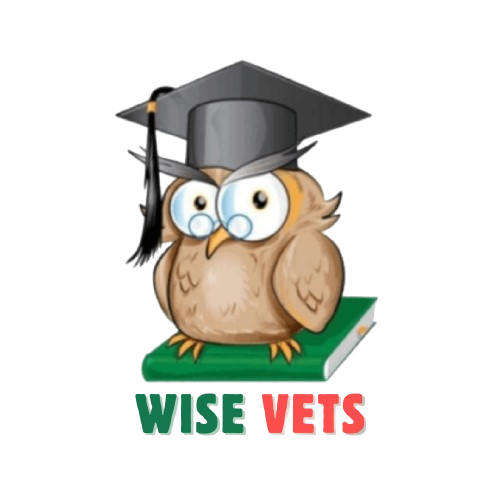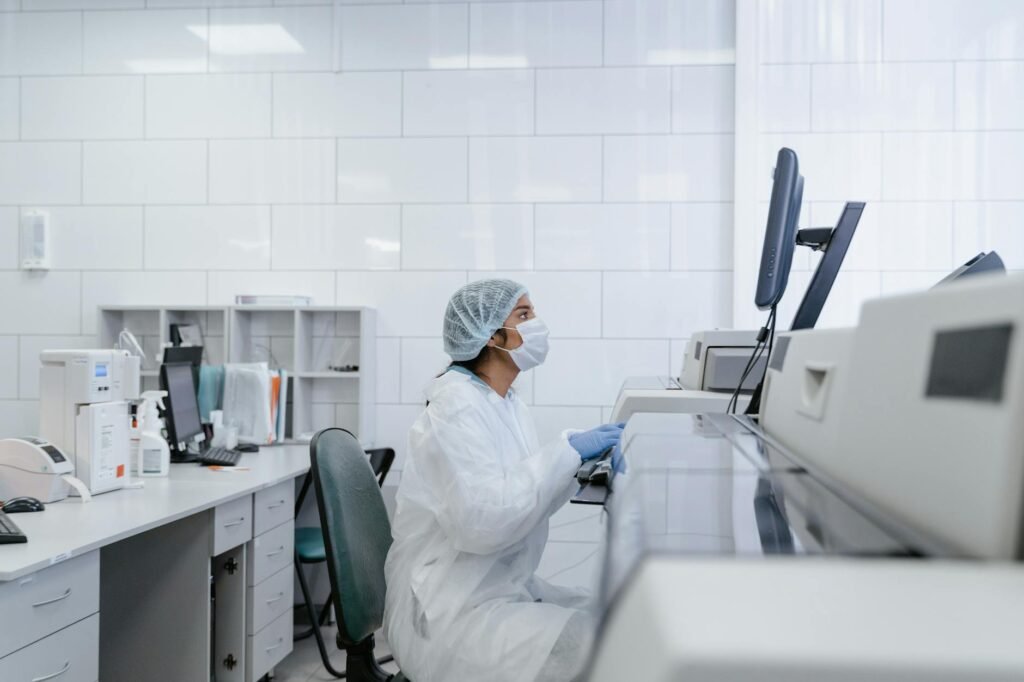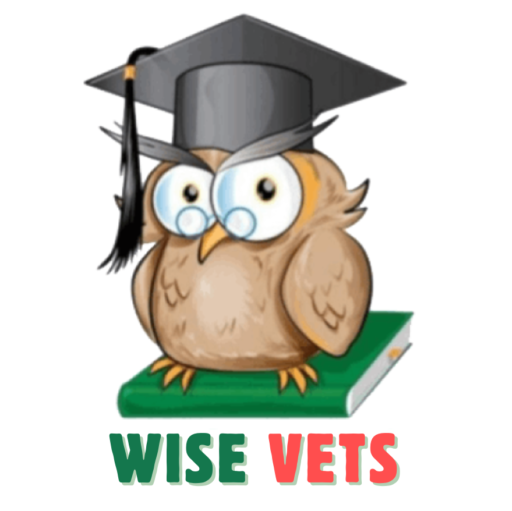Veterinary Medicine Overview
Understanding Veterinary Science
Veterinary science is a multidisciplinary field dedicated to the health and well-being of animals. This field encompasses a wide range of practices, from preventive care to the treatment of diseases. As veterinarians, we play a crucial role in ensuring that animals receive the best possible care throughout their lives.
In veterinary science, we focus on the diagnosis, treatment, and prevention of animal diseases. This involves a deep understanding of animal physiology, pathology, and pharmacology. We also employ sophisticated medical techniques and interventions that are often comparable to those used in human medicine (Ross University School of Veterinary Medicine).
Our work is not limited to individual animals; it extends to public health as well. The One Health approach emphasizes the interconnectedness of human, animal, and environmental health. By working together across disciplines, we can address complex health issues that impact multiple species and ecosystems (CDC).
Importance of Veterinary Medicine
The importance of veterinary medicine cannot be overstated. Our role extends beyond the treatment of sick animals; we are also involved in preventing diseases, promoting animal welfare, and ensuring food safety.
Vaccination and prophylaxis are key components of our preventive care strategies. By vaccinating animals, we help to control the spread of infectious diseases, protecting both the animal population and human health. Effective communication about health risks is also essential in preventing outbreaks and ensuring the well-being of animals and their human companions.
Veterinary medicine is also vital for addressing animal diseases that can be transmitted to humans, known as zoonotic diseases. By closely monitoring and managing these diseases, we help to safeguard public health.
Our field is experiencing a trend towards super-specialization, with many veterinarians seeking additional training and becoming board-certified in specific areas such as surgical oncology or internal medicine (Ross University School of Veterinary Medicine). This allows us to provide advanced care and treatment options for animals, ensuring their optimal health and quality of life.
The table below highlights some of the key areas within veterinary medicine and their importance:
| Key Area | Importance |
|---|---|
| Disease Prevention | Controls the spread of infectious diseases |
| Public Health | Protects human health through zoonotic disease management |
| Animal Welfare | Ensures humane treatment and care for animals |
| Food Safety | Monitors and ensures the safety of food products from animals |
| Advanced Care | Provides specialized treatment options for complex conditions |
By understanding and appreciating the importance of veterinary medicine, we can continue to make significant contributions to animal wellness and public health. For more information on veterinary care, visit our veterinary care page.
Disease Prevention in Veterinary Medicine
Disease prevention is a cornerstone of veterinary medicine, ensuring that animals remain healthy and free from illnesses. This section delves into two critical aspects: vaccination and prophylaxis, and health risk communication.
Vaccination and Prophylaxis
Vaccination and prophylaxis play a vital role in preventing diseases in animals. These measures help protect animals from various infectious diseases, reducing the risk of outbreaks and maintaining overall animal health. Vaccination involves administering vaccines to stimulate an immune response, while prophylaxis includes preventive treatments administered post-exposure to prevent the onset of disease.
| Disease | Vaccine Type | Frequency |
|---|---|---|
| Rabies | Inactivated Virus | Annually or Triennially |
| Distemper | Modified Live Virus | Every 3 Years |
| Parvovirus | Modified Live Virus | Every 3 Years |
| Leptospirosis | Inactivated Bacteria | Annually |
Figures courtesy WHO Eastern Mediterranean Region
Vaccination schedules and protocols can vary based on the animal species, geographical location, and disease prevalence. It is essential for veterinarians to stay informed about the latest guidelines and recommendations for vaccination and prophylaxis to provide the best care for their animal patients.
For more details on veterinary practices, visit our page on veterinary clinic.
Health Risk Communication
Effective health risk communication is crucial in preventing diseases and promoting animal wellness. Veterinarians must provide clear and accurate information to pet owners, farmers, and the public about potential health risks and preventive measures. This includes educating them about the importance of vaccinations, proper animal care, and recognizing early signs of illness.
Animals often serve as early warning signs of potential human illnesses, as they can be affected by the same diseases and environmental hazards. For example, birds often die of West Nile virus before people in the same area get sick with the virus (CDC). Therefore, timely communication about animal health can help prevent the spread of zoonotic diseases to humans.
| Communication Strategy | Target Audience | Purpose |
|---|---|---|
| Public Awareness Campaigns | General Public | Inform about zoonotic diseases |
| Educational Workshops | Pet Owners | Teach proper animal care |
| Collaboration with Farmers | Farmers | Implement preventive measures on farms |
| Coordination with Health Departments | Health Professionals | Monitor and control disease outbreaks |
Figures courtesy CDC
The success of public health interventions requires cooperation among human, animal, and environmental health partners. By fostering collaboration and effective communication, we can address health issues at the animal-human-environment interface more efficiently.
For additional information on related topics, explore our articles on veterinary science and animal diseases.
One Health Approach
Interconnectedness of Health
The One Health approach recognizes that the health of people is closely connected to the health of animals and our shared environment. This interconnectedness has become more significant due to changing interactions between people, animals, plants, and the environment (CDC). By understanding these connections, we can better address health threats that impact multiple species, including humans.
One Health issues encompass a wide range of health threats shared by people, animals, and the environment. These include:
- Emerging zoonotic diseases
- Neglected tropical diseases
- Antimicrobial resistance
- Food safety
- Environmental contamination
- Climate change
To address these issues effectively, we need collaboration across disciplines and sectors. Professionals from human health, animal health (including veterinarians), environmental health, law enforcement, policymakers, agriculture, communities, and pet owners must work together. This cooperation is crucial for addressing health issues at the animal-human-environment interface.
| Health Threat | Example |
|---|---|
| Zoonotic Diseases | West Nile Virus |
| Antimicrobial Resistance | Multi-drug Resistant Bacteria |
| Food Safety | Contaminated Produce |
| Environmental Contamination | Chemical Spills |
| Climate Change | Vector-Borne Diseases |
Addressing Zoonotic Diseases
Zoonotic diseases are illnesses that can spread between animals and humans. The One Health approach is vital in addressing these diseases, as it involves monitoring and controlling public health threats and understanding how diseases spread among different species (CDC).
Animals can serve as early warning signs of potential human illness. For example, birds often die of West Nile virus before people in the same area get sick. By monitoring animal health, we can identify and mitigate risks to human health.
The success of public health interventions requires the cooperation of human, animal, and environmental health partners. This collaboration helps to:
- Monitor disease outbreaks
- Develop and implement control measures
- Educate the public and stakeholders
- Coordinate response efforts
For more information on how veterinary medicine plays a role in preventing animal diseases, visit our sections on veterinary care and veterinary clinic.
By promoting collaboration across all sectors, the One Health approach aims to achieve the best health outcomes for people, animals, and plants in a shared environment. This holistic perspective is essential for addressing the complex and interconnected health challenges we face today.
Veterinary Specializations
Veterinary medicine offers a wide array of specializations, allowing us to pursue various career paths and achieve board-certified expertise. These specializations enable veterinarians to provide tailored care and advanced treatments for animals, enhancing overall animal wellness.
Diverse Career Paths
The field of veterinary medicine encompasses numerous career opportunities beyond general practice. Veterinarians can work in research labs, zoos, farms, and countless other settings (St. George’s University). This diversity highlights the vast potential within our profession.
The American Veterinary Medicine Association (AVMA) recognizes 22 veterinary specialties, covering areas like internal medicine, ophthalmology, radiology, surgery, and emergency and critical care. Unique specialties include animal welfare, poultry veterinary medicine, laboratory animal medicine, and theriogenology (animal reproduction).
Here is a snapshot of some common veterinary specializations:
| Specialty | Description |
|---|---|
| Internal Medicine | Focuses on diagnosing and treating internal diseases. |
| Ophthalmology | Specializes in eye health and vision care for animals. |
| Radiology | Uses imaging techniques like X-rays and ultrasounds for diagnosis. |
| Surgery | Performs surgical procedures to treat injuries and illnesses. |
| Emergency and Critical Care | Provides urgent care for critically ill or injured animals. |
Board-Certified Expertise
Board-certified veterinarians have undergone extensive training beyond their initial Doctor of Veterinary Medicine (DVM) degree. This specialized training typically involves one year of internship followed by two to three years of residency training.
Super-specialization is a growing trend in veterinary medicine, similar to human medicine. For example, some veterinarians become board-certified pediatric surgeons with expertise in gastroenterology or board-certified surgical oncologists specializing in veterinary cancer surgery.
The AVMA also recognizes 22 specialty organizations, each requiring additional training beyond that of a general practice veterinarian (St. George’s University). These organizations ensure that specialists are equipped with the advanced knowledge and skills needed to excel in their chosen fields.
By pursuing board-certified expertise, veterinarians can provide advanced veterinary care and contribute significantly to the health and wellness of animals. This specialization not only enhances our professional growth but also ensures that we can address complex medical conditions and improve the quality of life for our animal patients.
Explore more about the different paths within veterinary science and how we can make a profound impact on animal diseases and wellness.
Becoming a Veterinarian
Embarking on a journey to become a veterinarian is both challenging and rewarding. To guide aspiring veterinarians, we will explore the essential education and training required, as well as the diverse career opportunities available in the field of veterinary medicine.
Career Opportunities
Once we have completed our education and training, numerous career paths open up in the field of veterinary medicine. The U.S. Bureau of Labor Statistics estimates a 20% growth in employment of veterinarians between 2022 and 2032, with approximately 5,000 job openings per year expected over the next decade (Inspira Advantage).
Diverse Career Paths
Private Practice:
- Working in a veterinary clinic treating pets and companion animals.
- Specializing in areas such as surgery, dermatology, or cardiology.
Public Health:
- Involvement in veterinary care and disease control programs.
- Working with organizations to monitor and control animal diseases.
Research and Academia:
- Conducting research on animal health and diseases.
- Teaching and training future veterinarians.
Specializations:
- Pursuing board certification in one of the 41 specialties.
- Specialties include exotic animal medicine, oncology, and emergency care.
| Career Path | Median Pay (Annual) |
|---|---|
| General Veterinarian | Rs. 15,00,000 |
| Specialized Veterinarian | Varies by specialty |
The veterinary field offers a wide range of opportunities for those passionate about animal health and wellness. By pursuing the necessary education and training, and exploring the various career paths available, we can make a significant impact on the well-being of animals. For more information on veterinary specializations and advanced techniques, visit our section on veterinary specializations.
Advancements in Veterinary Medicine
Sophisticated Techniques
In recent years, veterinary medicine has seen remarkable progress, with veterinarians now utilizing sophisticated medical techniques and interventions that are on par with those used in human healthcare. This evolution allows us to offer our animal patients advanced care that ensures their wellness and longevity.
One of the most notable advancements is the use of diagnostic imaging technologies such as MRI and CT scans. These tools enable us to get a clear view of internal structures, aiding in accurate diagnosis and treatment planning.
| Diagnostic Tool | Purpose | Animal Applications |
|---|---|---|
| MRI | Detailed soft tissue imaging | Brain, spine, muscles |
| CT Scan | 3D imaging of internal organs | Tumors, bone fractures |
| Ultrasound | Real-time imaging | Heart, abdomen |
Furthermore, minimally invasive surgical techniques, such as laparoscopic and arthroscopic surgeries, have become more common. These methods reduce recovery time and minimize pain for the animal.
We are also seeing advancements in regenerative medicine, including stem cell therapy and platelet-rich plasma treatments. These therapies promote healing and regeneration, offering new hope for animals with chronic conditions or severe injuries.
For more information on the latest in veterinary care, visit our page on veterinary care.
Parallels with Human Medicine
The parallels between veterinary medicine and human medicine are becoming increasingly apparent as both fields advance. We are now performing medical interventions and techniques that were once exclusive to human healthcare. This convergence highlights the sophistication and dedication within veterinary science.
Some parallels include:
- Oncology Treatments: Chemotherapy, radiation therapy, and immunotherapy are now available for pets diagnosed with cancer, offering them a chance at remission and extended life.
- Cardiology: Advanced heart surgeries and treatments, including pacemaker implantation and balloon angioplasty, are now commonplace in veterinary practice.
- Orthopedics: Joint replacements, such as hip and knee replacements, are performed to improve the quality of life for animals suffering from arthritis or injuries.
These advancements underscore the importance of continuous education and training for veterinarians. By staying updated with the latest techniques and technologies, we can provide unparalleled care for our animal patients. For those interested in pursuing a career in this dynamic field, explore the educational pathways on our veterinary science page.
As we continue to break new ground in veterinary medicine, it’s clear that our commitment to animal welfare is stronger than ever. Embracing these advancements allows us to elevate the standard of care and ensure that our furry, feathered, and scaled patients receive the best possible treatment.






